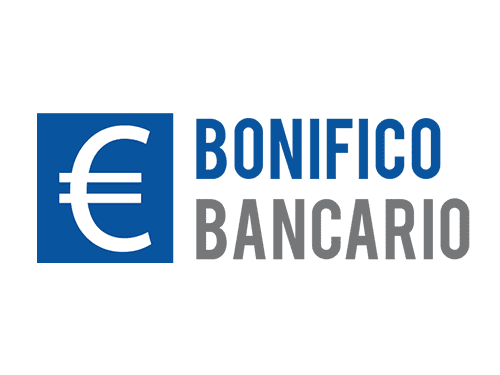Triangles: A Short Study in Continuation Patterns
When it comes to trading the rising wedge pattern, there is one common practice. More often than not, targets are placed at the beginning of the upper trend line — alternatively, the first high. It is worth noting that there might be some differences in the rising wedge pattern’s appearance on a chart, depending on whether it is intended to serve as a continuation or a reversal pattern. A rising wedge forms when the price’s movement consolidates between two sloping trend lines collectively displayed as a triangle.
A descending triangle can be drawn once two swing highs and two swing lows can be connected with a trendline. The price is still being confined to a smaller and smaller area over time, but it is reaching a similar high point each time the low moves up. An ascending triangle can be https://g-markets.net/ drawn once two swing highs and two swing lows can be connected with a trendline. An understanding of these three forms will give you an ability to develop breakout or anticipation strategies to use in your day trading, while allowing you to manage your risk and position size.
Advantages and Limitations of Using Ascending Triangle Pattern
With a rising wedge, trading and pattern formation occurs on increased volumes. In contrast, in the formation of an ascending triangle, volumes are minimal and can only increase when the upper resistance is broken. The ascending triangle pattern is very similar to the rising wedge pattern, which is why many traders, especially beginners, confuse them.
Amazon Stock Helps Pull Market Higher After Bouncing Within This Pattern: The Bull, Bear Case For The Tec – Benzinga
Amazon Stock Helps Pull Market Higher After Bouncing Within This Pattern: The Bull, Bear Case For The Tec.
Posted: Thu, 07 Sep 2023 19:24:18 GMT [source]
As long as a trader’s lines help them visualize profitable trends, then they’re drawing them correctly. In general, your top line should seek to connect swing highs with other swing highs, and the bottom line should do the same with swing lows. You can decide whether or not you want to include candle wicks, and beginners might want to try both to see which provides more consistent returns. A descending triangle is formed by continuously lowering swing highs over time, and swing lows that reach similar price levels as the last lows.
Tips and Best Practices for Trading Ascending Triangle Patterns
The ascending triangle pattern, like other patterns, shows the emotions of traders trading the stock. Once the breakout from the ascending triangle has occurred, the price projection or target is found by measuring the widest distance of the pattern and applying it to the resistance breakout. This gives an estimated target price for the asset following the breakout. However, this target is just a guideline, and other technical analysis tools should also be employed when deciding when to sell.
You can see from the chart below that bulls break out the resistance level, and the price is corrected down to test the broken-out level. The essence of trading with this method is to expect a retest of the broken-out resistance level. Let’s take a closer look at the four-hour chart of Apple Inc. stock. There are several methods to trade the ascending triangle in technical analysis. If all the criteria and characteristic features of the pattern are met, it is necessary to measure the potential profit target for the pattern before entering a buy trade.
Can an ascending triangle be bearish?
The biggest issue with this chart pattern is the potential for a false breakout. As a result, the chart pattern may be redrawn several times as the price action edges past the resistance level, but fails to maintain the breakout price. To learn more about stock chart patterns and how to take advantage of technical analysis to the fullest, be sure to check out our entire library of predictable chart patterns. These include comprehensive descriptions and images so that you can recognize important chart patterns scenarios and become a better trader.
- Applied in the real-world, most triangles can be drawn in slightly different ways.
- A rising wedge forms when the price’s movement consolidates between two sloping trend lines collectively displayed as a triangle.
- It helps to have exit strategies in place when purchasing, so you can sell when it is the right time based on your criteria.
- In this article, we go over the rising wedge pattern and apply it to a historical case to illustrate its use.
- Support and resistance levels represent points on a price chart where there is a likelihood of a letup or a reversal of the prevailing trend.
Whether you’re looking at a daily chart or an intraday chart, it’s still a bullish pattern. The location of the ascending triangle in relation to the trend is important. It will determine if there will be a continuation or a reversal in the trend. It is possible for the ascending triangle to appear at the bottom of a downtrend. This means that the downward momentum is fading before it changes direction. On the ascending triangle, the horizontal line represents overhead supply that prevents the security from moving past a certain level.
Elliott Wave Expanding Triangle Pattern – Everything You Need to Know about It
This article makes use of line chart illustrations to present the three triangle chart patterns. Traders ought to familiarize themselves with the three technical analysis charts and figure out which one suits them best, although, most prefer using forex candlestick charts. False breakouts are the main problem traders face when trading triangles, or any other chart pattern. A false breakout is when the price moves out of the triangle, signaling a breakout, but then reverses course and may even break out the other side of the triangle.
A symmetrical triangle is composed of a diagonal falling upper trendline and a diagonally rising lower trendline. There are several continuation patterns, including the ascending triangle, that technical analysts use as signals that the existing price trend will likely continue. Other examples of continuation patterns include rising triangle pattern flags, pennants, and rectangles. For the ascending triangle,traders can measure the distance from the start of the pattern, at the lowest point of the rising trendline to the flat support line. That same distance can be transposed later on, starting from the breakout point and ending at the potential take profit level.
How to trade ascending triangle?
Technicians see a breakout, or a failure, of a triangular pattern, especially on heavy volume, as being potent bullish or bearish signals of a resumption, or reversal, of the prior trend. An ascending triangle is generally considered to be a continuation pattern, meaning that the pattern is significant if it occurs within an uptrend or downtrend. Once the breakout from the triangle occurs, traders tend to aggressively buy or sell the asset depending on which direction the price broke out.
If you see that the lower support line’s advances start getting shorter, it is a sign that the rallies are getting weaker. In that scenario, the upper resistance line struggles to keep pace with the support line’s slope, indicating that the end of the rising wedge is looming. However, increased volumes aren’t the only tool used to confirm a breakout.


